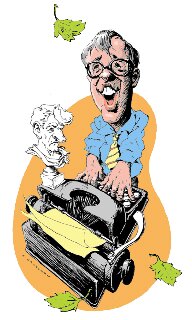The slow movement of Mozart’s G-minor Quintet is as heartbreaking as any music I know. I have written about this music before – a couple of pages in the foreword to my book of this same name repeat an article from New York Magazine in the 1970s, which in turn regurgitates wisdom verbatim from the classrooms of David Boyden and Joe Kerman at UC-Berkeley in the 1950s. Hearing it again last Friday, wonderfully played by the Calder Quartet plus Paul Coletti’s second viola at Zipper Hall, I found myself reacting more strongly than ever before to the G-minor outcry that begins the next movement, the ensuing Arioso – Mozart’s refusal to let go of the agonies he has shared with us over the eight minutes of the previous movement – and I ended the evening aware that my years of adoration of this one Mozart revelation so far have been in no way adequate.
That movement remains unique. Just the subtlety in the range of its tone color makes it so, in demanding that its five instruments perform muted until that overpowering release, the single high D that proclaims major triumphant over minor. In schoolboy enthusiasm I once proclaimed that D my favorite note in all music, and friends came over and asked me to play it for them – the one note! That’s nonsense, of course; a note is only a note in context. And when Ben Jacobson played it on Friday, because of the way he and his four partners had gotten themselves into the context of that amazing entire work, that stupendous panorama of suffering and irony and, in its final movement, an almost insolent masque of resolution, that high D had once again become, indeed, my favorite of all notes, ever.
The Calders are really good. They play the classical repertory with elegance and respect, patience and genuine wit. Beethoven’s first “Razumovsky†was their other big work on Friday, and this, too, was treated exactly right: a big, loving performance full of the great rhythmic quirks of middle-period Beethoven. Better still, they let the stars come out and shine all over the slow movement. That movement is just the reverse of Mozart’s. Midway, it simply soars, skyward, and the great performances do nothing to control the captivating ecstasy, as this didn’t.
The concert was free, and Zipper Hall filled up quickly with an audience young and attentive. Nobody applauded between movements. Ten-or-so years ago I wrote with concern about the dying out, or at least the aging out, of the chamber music audience. Now we have the Calder playing classic repertory at the Colburn School and the Denali playing contemporary repertory at Jacaranda, both to big, supportive audiences.
Both quartets, as it happens, played one of the new-music landmark works within the last few days and did so handsomely: Ben Johnston’s 1984 set of variations on “Amazing Grace†that wanders off into microtones and just intonation and other harmonic and contrapuntal shenanigans. The old boy was in town for a few days, and the Denali played his piece for him at an invitational party. Then, by the time the Calders played it to begin their concert, Ben Johnston himself had already flown off to Germany for some other celebration.
ECSTASY: I spoke of ecstasy back there. Then there is the slow movement of Maurice Ravel’s Piano Concerto: a quietly unfolding lyric line for the piano alone, untroubled, utterly joyous. At a certain point, as if the most natural thing in the world, a flute joins in, then others. Nothing breaks the quiet, loving…yes, ecstasy. That’s the way Martha Argerich played it last week here. Sure, it was thrilling, the way those iron fingers of hers shot out and made ice sculptures out of Ravel’s rhythms in the outer movements , but it was that slow movement, where you began by listening and then, without noticing, you found yourself breathing in the rhythm of the music itself. Yannick Nezet-Séguin, Montreal-born, was the excellent conductor, and put over a mostly moving Shostakovich Fifth although I found his tempo changes in the last movement a little off-putting. I cherish a tape from Kurt Sanderling’s days here as guest conductor; he knew Shostakovich, and he knew what this music was supposed to signify, and his way makes better sense than anyone’s else I know.
This weekend’s Philharmonic conductor, replacing Yuri Temirkanoff, has been the 31-year-old, obscenely good-looking, circa nine-feet-tall, curly-topped Pablo Heras-Casado, whom I managed to miss at his Green Umbrella debut last December but won’t ever again; he’s terrific. His bio, which has him leading virtually every new-music, experimental-music and youth-oriented organization here and abroad, goes on for days; that document is breath-taking, and so is his work. He leads without baton, but also without the affectation that many hands-only conductors employ; he is eminently watchable. His Mendelssohn “Italian†was crisp, spirited, impulsive; his Mahler Fourth was beautifully balanced. The devastating orchestral climaxes in first and third movements, which can sit at the edge of trashiness in less careful performances, were nicely, intelligently arrived at. Kate Royal sang the childlike Knaben Wunderhorn verses of the final movement very beautifully indeed, not chirpingly as some do but with wonderment and humor as all should. She stood, would you believe, even taller than Señor Heras-Casado; quite the sight.



Now this looks like a real blog and i am delighted to offer the very first comment on it. Congratulations!
The reason Kate Royal looked taller than Pablo Heras-Casado is that he is actually of average male height (about 5’10”) and she is in fact a little bit taller than that.
Looks like you liked that concert more than i did, but thank you anyway for continuing your fine writing!
Alan Rich, thank you, now we can tell you how wonderful your writing really is. Alex Ross (http://www.therestisnoise.com)called you the Dean of American Classical music critics. Your readers have never had any doubt about this.
Now, it would be great if you could persuade your Village Voice Jazz peer, Nat Hentoff, recently canned after over 50 years by what I believe is the very same pack of idiots who ended your assignment, to also continue his writing with a weblog.
Think of it as paying back.
>>RSM
Deans are sometimes a bit rusty on the edges, sometimes not. I’ll try to live up to Alex’s kind words, but only selectively. To my shame, I don’t know Nat Hentoff as well as my admiration of his writing would vouchsafe (love that word!), but if any of our other Boston Latin classmates sees this and passes this on (Irv Berkowitz, for example, who lives nearby) tell Nat that running a blog is a terrific restorative to the soul and the bloodstream.
Thanks for your response. Searching on Mr. hentoff, I find him now at the Cato Institute, not too shabby; and at the jazz.com blog, where I do not see an RSS feed, such as you, sir, have provided and thank you very much. It does make life easier.
I do follow Alex Ross’ blog, and I follow Greg Sandow. You are still the King of the Walk.
>>RSM
My dear Mr. Rich:
Love the new look of the website and I will gladly try to throw my Amazon business your way!
We sat nearby overlooking the Denali down below at the Janaranda party…I loved the “Amazing Grace” quartet (Mr. Johnston is new to me) but was unconvinced by the guitar/baritone cycle…
I applaud your assessment of Mr. Heras-Casado…did Ginell here the same concert????
The two critics were listening to the same concert, i am sure, but they heard it slightly differently which is only natural, music being such a subjective thing. This was actually one of those occasions when Richard Ginell got it quite right. The young Spanish maestro – Pablo Heras-Casado – is a very pleasant man but his conducting was far from being effective, especially in the Mahler. We shouldn’t judge him too harshly because it was not really his program, but the drop in the quality of the orchestra’s playing, compared to the previous week, was quite significant. The week before last, the nearly equally young man on the podium – a French-Canadian named Yannick Nezet-Seguin – got the orchestra to play on a very high level and was especially impressive in Shostakovich’s Fifth. If his interpretation was not quite as deeply felt as Kurt Sanderling’s who lived with this symphony almost from the day it was premiered, it is not surprising – but it sure was better than with most other conductors.
Pingback: Times Quotidian